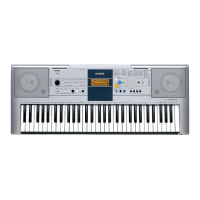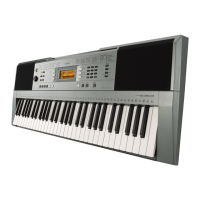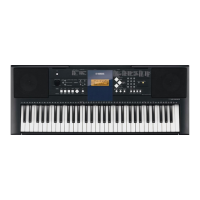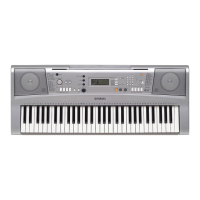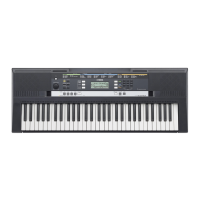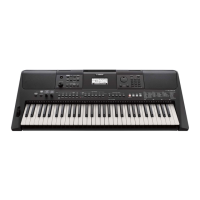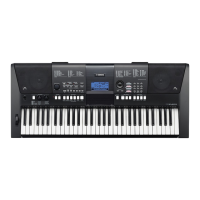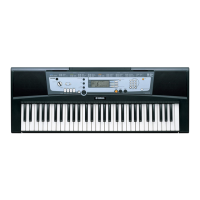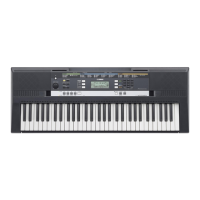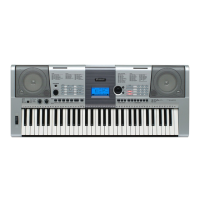PSR-E360 Owner’s Manual
34
Appendix
Troubleshooting
Problem Possible Cause and Solution
When the instrument is turned on or
off, a popping sound is temporarily pro-
duced.
This is normal and indicates that the instrument is
receiving electrical power.
Noise is heard from the instrument’s
speakers.
Noise may be heard if a mobile phone is used near
the instrument or if the phone is ringing. Turn off
the mobile phone, or use it further away from the
instrument.
Noise is heard from the instrument’s
speakers or headphones when using
the instrument with the app on the
smart device such as smartphone or
tablet.
When you use the instrument along with the app
on your smart device, we recommend that you
enable “Airplane Mode” on that device in order to
avoid noise caused by communication.
There is no sound even when the key-
board is played or when a song or style
is being played back.
Check that nothing is connected to the [PHONES/
OUTPUT] jack on the rear panel. When a set of
headphones is plugged into this jack, no sound is
output.
Not all of the voices seem to sound, or
the sound seems to be cut off.
The instrument is polyphonic up to a maximum of
32 notes. If a style or Song is playing back at the
same time, some notes/sounds may be omitted (or
“stolen”) from the accompaniment or Song.
The ACMP ON indicator does not
appear when the [ACMP ON/OFF] but-
ton is pressed.
• Always press the [STYLE] button first when you
are going to use any Style-related function.
• The ACMP ON indicator does not appear when
the Duo mode is on.
The Style does not sound properly. Make sure that the Style Volume (page 32 Func-
tion 001) is set to an appropriate level.
• Is the Split Point set to an appropriate key for the
chords you are playing? Set the Split Point to an
appropriate key (page 32 Function 005).
• Is the “ACMP ON” indicator showing in the dis-
play? If it is not showing, press the [ACMP ON/
OFF] button so that it does show.
The Style does not sound as you play
a chord.
• The auto accompaniment will sometimes not
change when related chords are played in
sequence (e.g., some minor chords followed by
the minor seventh).
• Two-note fingerings will produce a chord based
on the previously played chord.
• Playing two same root keys in the adjacent
octaves produces accompaniment based only
on the root.
The footswitch (for sustain) seems to
produce the opposite effect. For exam-
ple, pressing the footswitch cuts off the
sound and releasing it sustains the
sounds.
The polarity of the footswitch is reversed. Make
sure that the footswitch plug is properly connected
to the [SUSTAIN] jack before turning on the power.
The sound of the voice changes from
note to note.
This is normal. The AWM tone generation method
uses multiple recordings (samples) of an instru-
ment across the range of the keyboard; thus, the
actual sound of the voice may be slightly different
from note to note.
• The volume is too soft.
• The sound quality is poor.
• The rhythm stops unexpectedly or
will not play.
• The recorded data of the song, etc.
does not play correctly.
• The LCD display suddenly goes
dark, and all panel settings are reset.
The batteries are low or dead. Replace all six bat-
teries with completely new ones, or use the
included AC adaptor.
Power suddenly and unexpectedly
turns off.
This is normal and the Auto Power Off function
may have been activated (page 13). If you need to
disable the Auto Power Off function, select “Off” in
the Function settings (Function 021; page 33).
When the instrument is turned on,
power is turned off suddenly and unex-
pectedly.
This is normal. If an AC adaptor other than the one
specified is used, power may be turned off sud-
denly and unexpectedly.
Problem Possible Cause and Solution
Appendix
